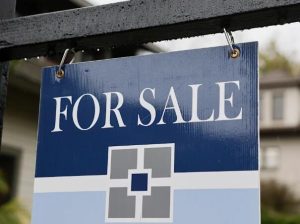
Home prices remain historically high despite rising rates. Experts say a shortage of affordable homes and the rate-lock effect are key reasons. Here’s what buyers need to know.
For many Americans, the dream of owning a home has become increasingly out of reach. Decades of rising property prices, paired with elevated mortgage rates, have left first-time and middle-income buyers struggling to enter the market.
While concerns over housing affordability are nothing new — dating back to a 1978 GAO report — the problem has only intensified in the wake of the COVID-19 pandemic. Today’s home prices are still well above pre-2020 levels, and mortgage rates have more than doubled since their pandemic-era lows.

So why haven’t prices corrected?
According to Josh Hirt, Senior U.S. Economist at Vanguard, the issue boils down to two key challenges: lack of housing supply and the rate-lock effect.
? A Long-Standing Supply Problem
America is facing a shortage of affordable, entry-level homes — the kinds typically purchased by young families and first-time buyers. This problem has its roots in the aftermath of the 2008 financial crisis, when new construction sharply declined. Builders pulled back, and many never returned to the starter home segment.
Now, with more buyers than available homes — especially in lower price brackets — sellers often receive multiple offers, and bidding wars are common. It’s a textbook seller’s market.
? The Rate-Lock Effect
Many existing homeowners are choosing to stay put. Why? Because nearly half of them have mortgage rates under 3.5%, thanks to refinances made during the ultra-low rate environment of 2020–2021. With today’s 30-year rates hovering around 6.5%, trading up would mean significantly higher monthly payments — an average of $580 more per month on a $300,000 loan.
This hesitance to sell further constrains supply, especially among move-up buyers who would otherwise list their current homes, freeing up inventory for first-timers.
? Will Prices Drop?
While rising interest rates were expected to cool the housing market, that hasn’t happened on a large scale. Even if the Federal Reserve cuts rates in the near future, increased affordability could attract more buyers — again pushing prices higher unless supply also improves.
Some softening could occur in a recession scenario, but unless construction meaningfully accelerates or homeowners start listing in greater numbers, the supply-demand imbalance will likely persist.
? What Buyers Can Do
Hirt recommends adjusting expectations. Consider smaller homes, condos, or fixer-uppers as entry points into the market. Even at today’s higher rates, building equity over time and the ability to refinance later can make buying worthwhile.
? Regional Variation Matters
While national averages show high prices, local markets vary widely. Buyers may find better deals in regions where prices have cooled or where inventory is more balanced.
At the end of the day, today’s home prices reflect a complex mix of supply constraints, market psychology, and interest rate dynamics — not simple overvaluation.